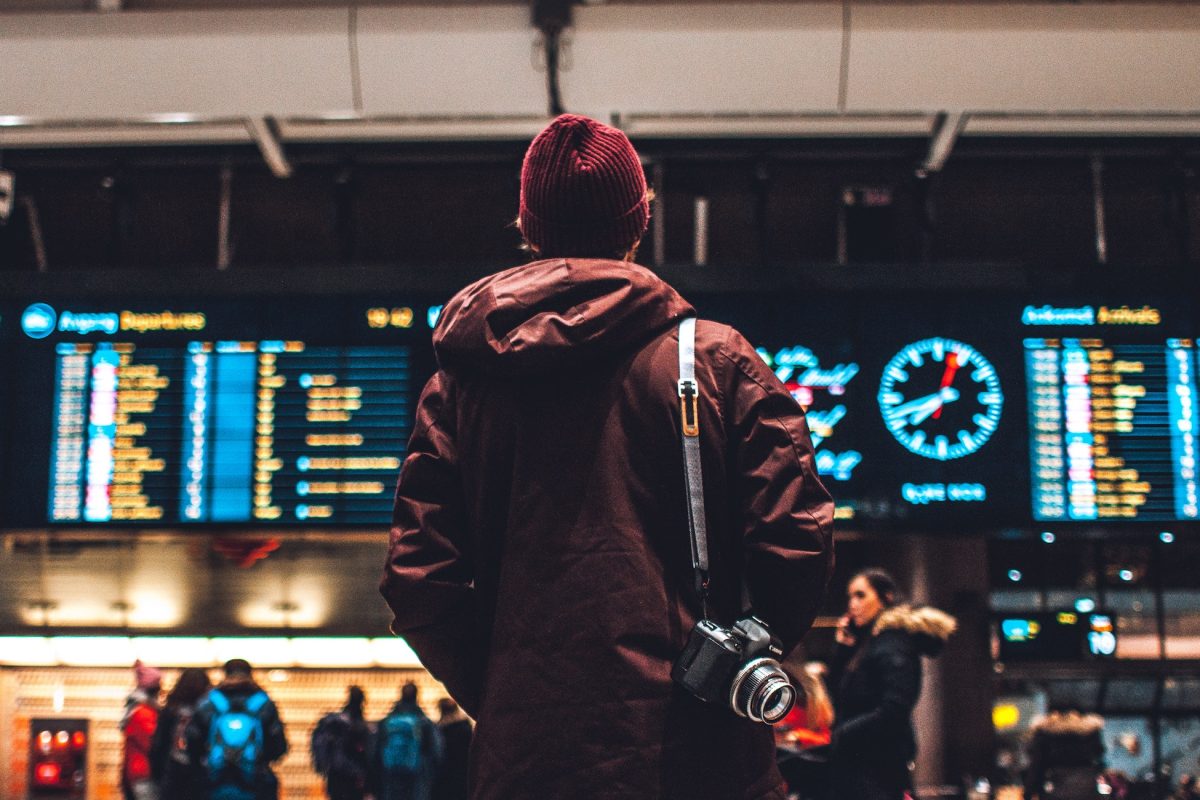Ever found yourself caught between the excitement of buying a new property and the nerves of waiting for your current house to sell? Welcome to the unpredictable, sometimes quirky world of bridging loans—a financial short-term lifesaver designed for situations where you need quick cash to move forward but aren’t quite ready to commit to a long-term mortgage. If you’re a millennial or Gen Z hustling to keep up with life’s crazy twist and turns, get ready to dive into everything you need to know about bridging loans—with a healthy dose of humor, relatable style, and in-depth insights to keep your financial game strong.
What Is a Bridging Loan Table of Contents
What Is a Bridging Loan, Anyway?
The Types of Bridging Loans You Should Know
The Pros and Cons of Bridging Loans
When Might You Need a Bridging Loan?
Understanding the Costs and Interest Rates
How to Qualify for a Bridging Loan
Bridging Loans Versus Other Financing Options
Real-Life Stories: Bridging Loans in Action
Legal, Regulatory, and Professional Considerations
Resources and Community Support: Your Next Steps
Tips for Millennials and Gen Z: Making Bridging Loans Work for You
Future Trends in Bridging Finance
Navigating the Application Process: A Step-by-Step Guide
What Is a Bridging Loan, Anyway?
Picture this: you’re eyeing a hot new property that fits your dreams like your fave hoodie, but your funds are tied up in another property that hasn’t sold yet. This is where a bridging loan—an ultra-short term financing option—steps in to bridge the gap between buying that new pad and finally selling the old one. Essentially, a bridging loan is a temporary, expensive piece of financial magic designed to help you unlock the funds you need right when you need them.
Bridging loans, sometimes known as bridge financing or short-term property loans, are typically used in the property market. Unlike conventional mortgages, these loans are quick and snappy—they provide the cash flow you need to make a purchase, renovate, or pay off some other urgent expense while waiting for your long-term financing to kick in. Think of it as a financial gap filler, enabling you to take advantage of a limited-time opportunity without missing a beat.
While bridging loans are often associated with property buying, they also come in handy in other financial scenarios. Whether you’re planning a quick property investment or just need that emergency cash, bridging loans offer a lifeline when traditional loans just can’t keep up with your pace.
How Do Bridging Loans Work?
The mechanics behind bridging loans are pretty straightforward—if a little unconventional for your everyday banking routine. Here’s the deal: these loans are designed to cover a temporary funding gap, often for periods ranging from a few weeks to a couple of years. They are purpose-built to be repaid quickly, usually once your property sale or refinancing goes through.
In essence, a bridging loan provides:
- Quick Access to Funds: Since processing times are often measured in days rather than weeks, a bridging loan is perfect when time is of the essence.
- High Flexibility: They cater to various scenarios, from buying a new property before selling your current one to funding urgent property renovations.
- Short-Term Solutions: These loans are designed to fill financial gaps rather than serve as long-term financing solutions.
Typically, the lender will assess the value of your current property and the potential of the new purchase before deciding the amount they’re willing to lend. Interest rates for bridging loans tend to be higher than those for traditional mortgages because of the elevated risk and shorter repayment period. So while you get that much-needed cash quickly, you’re also agreeing to a premium rate for the convenience.
When it comes to repayment, most lenders expect repayment from the proceeds of your property sale or through refinancing arrangements, making bridging loans essentially a temporary fix rather than a permanent addition to your financial portfolio.
The Types of Bridging Loans You Should Know
Not all bridging loans are created equal—there are several varieties tailored to different financial scenarios. Knowing the difference can save you from potential pitfalls and help you choose the right option. Here’s a breakdown:
Closed Bridging Loans
A closed bridging loan is one where there is a confirmed exit strategy in place. This means you already have a concrete plan, such as an agreed-upon sale of your current property, to repay the loan on a specified date. Because the exit strategy is secured, lenders may offer more attractive terms on a closed bridge loan.
Open Bridging Loans
On the flip side, an open bridging loan doesn’t have a predefined exit route. This type is often used in scenarios where the final repayment source isn’t immediate, such as competitive procurement of property investments or unexpected financial delays. The flexibility of an open loan comes with increased risk for the lender, so expect a higher interest rate compared to closed loans.
Property Bridging Finance
Specifically designed for property transactions, property bridging finance focuses on the value of your real estate assets. Lenders heavily weigh the property’s appraisal value and market potential. This type of bridging loan is common among property developers and savvy investors looking to capitalize on short-term market dynamics.
Remember, whether you’re using a closed, open, or property-specific bridging loan, the key is having a solid exit strategy. Without one, you risk finding yourself stuck in a high-interest debt spiral faster than you can say “refinance.”
The Pros and Cons of Bridging Loans
Before you decide to take the plunge into bridging loans, let’s break down the advantages and potential drawbacks. Like anything in life, these financial instruments have their perks and pitfalls.
Pros:
- Speedy Approval: For those moments when you need funding ASAP, bridging loans are famous for their quick turnaround times—often approved within days.
- Flexibility: They cater to diverse needs: from purchasing a dream home to funding urgent property renovations.
- Opportunity Seizing: With access to fast cash, you can act on time-sensitive opportunities without waiting around for traditional loans.
- Customizable Solutions: Lenders often tailor bridging loans to your specific circumstances, making them a flexible alternative to rigid mortgage plans.
Cons:
- High Costs: The convenience of quick access comes at a price—bridging loans charge higher interest rates and fees compared to conventional mortgages.
- Short Repayment Terms: With repayment periods typically ranging from a few months to a couple of years, missing your exit strategy can lead to financial stress.
- Risk of Overborrow: The lure of fast cash might tempt you to borrow more than needed, leading to bigger headaches down the line.
- Strict Repayment Requirements: Since these loans are designed to be short-term solutions, failing to secure a long-term financing plan in time can result in serious repercussions.
Weigh these pros and cons carefully. For many, the speed and flexibility of a bridging loan are exactly what’s needed to seize an opportunity. For others, the high costs and tight deadlines might suggest exploring alternative funding methods until the timing’s right.
When Might You Need a Bridging Loan?
Bridging loans aren’t your everyday financing tool—think of them as the ultimate emergency fund for property transactions and short-term cash crunches. Here are some scenarios where a bridging loan can be a real game-changer:
- Buying a New Home Before Selling Your Current One: Perhaps the most common scenario. When you find your dream home, but the sale of your existing property is still in progress, a bridging loan can help secure the new purchase.
- Property Renovations: If you’re planning a facelift for an investment property or your own home, a bridging loan can provide the funds you need for renovations without disturbing your long-term finances.
- Property Investments: Savvy investors may use bridging loans to snap up undervalued properties quickly, then refinance once the asset is improved or sold at a profit.
- Business Needs: Sometimes, companies require temporary funding solutions to capitalize on short-term opportunities like purchasing property or covering unforeseen costs during a sale.
- Quick Cash Flow: In times of financial urgency, bridging loans can be a last-minute recourse for those who need that extra cash infusion to tide over until their next financial milestone.
The key takeaway? Bridging loans are perfect for situations where timing is everything, and a few extra days—or weeks—of financial backing can make all the difference between a missed opportunity and a life-changing move.
Understanding the Costs and Interest Rates
Let’s get real: nothing in finance comes for free, and bridging loans are no exception. Because these loans are short-term and cater to riskier funding scenarios, they come bundled with higher interest rates and fees. Here’s what you need to know about the cost of borrowing:
Interest Rates
Interest rates on bridging loans typically range well above conventional mortgage rates. They’re structured this way to reflect the elevated risk and the short-term nature of the financing. As a borrower, you should be prepared to pay a premium for that rapid approval and quick access to cash.
It’s crucial to shop around and understand the fine print. Some lenders offer competitive rates if you can demonstrate a solid exit strategy and strong property equity, but don’t expect to find a one-size-fits-all rate.
Additional Fees
Beyond the base interest rate, bridging loans may come with other fees, such as arrangement fees, administration fees, and exit fees. These can add up quickly, so it’s essential to have a transparent understanding of all the associated costs before signing on the dotted line.
Pro tip: Always ask the lender to provide a comprehensive breakdown of costs, and factor these into your calculations when assessing whether a bridging loan is financially viable for your situation. Remember, the hassle of expenses is worth it—if it means you can secure that golden opportunity.
How to Qualify for a Bridging Loan
If the idea of bridging loans has you nodding along, you’re probably wondering: “Do I qualify?” The answer isn’t as straightforward as checking off a list of criteria, but here are some key factors lenders take into account:
- Property Value and Equity: Your current property’s value is crucial, as it’ll serve as collateral for the loan. Lenders will evaluate its market value to determine how much they’re comfortable lending.
- Exit Strategy: The importance of having a clear, realistic strategy to repay the loan cannot be overstated. Whether it’s selling your property or securing refinancing, a guaranteed exit route is vital.
- Your Credit Profile: While bridging loans are more flexible in terms of credit checks compared to some traditional loans, lenders still like to see that you’re financially responsible and have a good track record.
- Proof of Income and Financial Health: Lenders might scrutinize your financial statements to ensure you can handle the risks associated with short-term borrowing.
- Property Market Conditions: The overall health of the property market can influence the ease and terms of approval. A robust market may give you an edge, while shaky conditions might prompt more rigorous assessments from the lender.
Keep in mind that each lender has its own criteria and risk appetite, so what qualifies with one might not cut it with another. A little bit of homework and leveraging professional financial advice can help you present the best case for a bridging loan approval.
Bridging Loans Versus Other Financing Options
When you’re in need of quick cash, bridging loans might seem like the only viable option—but they’re far from the only trick in the financial toolbox. Here’s how bridging loans stack up against some other common alternatives:
Traditional Mortgages
Unlike bridging loans, traditional mortgages offer long-term financing solutions with lower interest rates and regular repayment schedules. However, they come with lengthy approval processes and stringent requirements. If you’re not in a rush and have time to navigate the conventional lending labyrinth, a mortgage might be more cost-effective in the long run.
Personal Loans
Personal loans are often easier to secure than bridging loans and come with fixed repayment terms and interest rates. However, they might not offer the large sums needed for property transactions, and their repayment structures can be less flexible when compared to bridging loans.
Asset-Based Loans
If you have other valuable assets, such as investments or vehicles, asset-based loans could be an alternative. These work similarly to bridging loans in terms of short-term usage, but they might not be tailored to property transactions. Plus, risk factors and interest rates vary significantly.
The bottom line is that bridging loans are best used as an emergency, short-term solution for situations where timing—almost more than money—is paramount. Review your options, weigh the benefits, and choose the solution that best aligns with your unique financial situation.
Real-Life Stories: Bridging Loans in Action
Sometimes a real-life story beats a dry explanation any day! Let’s dive into a few case studies where bridging loans turned a potential financial disaster into a strategic win.
Case Study 1: The Millennial Home Upgrade
Meet Alex, a savvy millennial who had his eyes set on a trendy, up-and-coming neighborhood property. Only one problem—Alex was stuck waiting for his current home to sell while the perfect new gem slipped closer by the day. With a bridging loan, Alex was able to secure the new property and later repaid the loan after the sale went through. His quick, decisive move not only boosted his property portfolio but also proved that with a bit of short-term financial ingenuity, you can always stay one step ahead.
Case Study 2: The Gen Z Renovation Rescue
Then there’s Mia, a Gen Z entrepreneur with big plans for her family home turned funky co-working space. When an unexpected opportunity to expand arose, Mia’s renovation budget fell short. A bridging loan provided the much-needed funds to revamp the space, impressing her clients and calming her investor worries. Mia’s story shows that even in a tight cash flow scenario, bridging loans can transform obstacles into stepping stones.
Case Study 3: The Investor’s Quick Flip
And finally, consider Jordan, a property investor with a knack for spotting undervalued real estate. With a bridging loan, Jordan was able to quickly secure a promising property before the competition could blink. After adding value through smart renovations, he sold the property at a handsome profit and repaid the loan in full. What seemed like a risky play turned into a lucrative flip, proving that sometimes, seizing the moment with a bridging loan is the secret ingredient to success.
These stories underscore that while bridging loans carry a premium cost, their tactical use in the right circumstances can open doors to unique opportunities that traditional financing might not allow.
Legal, Regulatory, and Professional Considerations
As with any financial instrument, understanding the legal and regulatory framework around bridging loans is crucial. Although bridging finance offers quick fixes, it’s vital to read the fine print and consult professionals before making major decisions.
Key considerations include:
- Transparency of Terms: Ensure that all fees, interest rates, charges, and conditions are clearly outlined in the loan agreement.
- Regulatory Compliance: Bridging loans are subject to financial regulations that vary by region. Confirm that your chosen lender complies with all relevant legal frameworks.
- Professional Financial Advice: Given the complexity and short-term nature of the financing, it never hurts to chat with a financial advisor or property expert before diving in.
- Exit Strategy Assurance: A robust exit strategy isn’t just a good idea—it’s often a required condition for approval. This minimizes the risks of being trapped in a high-interest debt cycle.
Keeping these factors in mind will help you navigate the bridging loan landscape with confidence and clarity. Remember, informed decisions are the foundation of exceptional financial health.
Resources and Community Support: Your Next Steps
Navigating the world of bridging loans isn’t something you have to do alone. With a vibrant community of financial experts, property enthusiasts, and peer networks, there are plenty of resources designed to help you make informed choices.
- Financial Blogs and Forums: Look for trusted websites and online communities dedicated to property finance and bridging loans. These platforms are great for real-time advice, insider tips, and personal success stories.
- Your Local Property Advisors: Schedule a consultation with a local financial advisor or mortgage broker who can provide tailored advice based on your unique financial landscape.
- Webinars and Workshops: Many experts offer free (or low-cost) webinars that break down the intricacies of bridging loans. This can be especially useful for first-timers navigating the process.
- Peer Networks on Social Media: Join Facebook groups, LinkedIn communities, or even Twitter chats where millennials and Gen Z finance enthusiasts share their experiences and recommend trusted lenders.
- Government and Regulatory Institutions: Check out your local government’s resources on property finance. These institutions often provide guides, FAQs, and contact information for further support.
Building a strong support network can help you stay updated on market trends, identify the best lending practices, and ensure that your short-term financing choice aligns with your long-term financial wellbeing. Now is the perfect time to dive deep into these resources and truly empower your financial journey.
Tips for Millennials and Gen Z: Making Bridging Loans Work for You
As a millennial or Gen Z go-getter, you’re likely no stranger to rapid career moves, urban migrations, and unexpected expenses. Here’s how you can make a bridging loan work seamlessly within your fast-paced lifestyle:
- Stay Informed: Keep your finger on the pulse of market trends. Regularly check financial blogs and subscribe to newsletters that demystify the property market and emerging financing options.
- Plan Your Exit Strategy Early: Whether it’s the sale of a current property or a refinancing arrangement, map out your repayment plan as soon as possible. This not only boosts your chances of approval but also sets you up for success when the time comes to clear your debt.
- Budget Wisely: Since bridging loans come with higher interest rates and additional fees, ensure your overall budget can accommodate these extra costs without derailing your financial stability.
- Leverage Technology: Use financial apps and budgeting tools to track your spending, plan your repayments, and monitor the market. A tech-savvy approach can often give you the edge in a competitive market.
- Ask for Help: Never hesitate to tap into your community for advice. Whether it’s a social media group or a local financial advisor, gaining insights from others who’ve been there can make all the difference.
With the right strategies in place, bridging loans can be a strategic tool in your financial toolkit—one that empowers you to act fast when opportunities arise, without sacrificing your long-term goals.
Future Trends in Bridging Finance
The financial landscape is constantly evolving, and bridging loans are no exception. Innovations in technology, shifting property markets, and changing consumer expectations are reshaping short-term lending practices. Here are a few trends to keep an eye on:
- Digital Platforms: The rise of fintech is revolutionizing how bridging loans are applied for and managed, making the process even quicker and more user-friendly.
- Increased Transparency: With better access to online reviews, fee breakdowns, and interest rate comparisons, consumers can make more informed choices than ever before.
- Regulatory Shifts: As the world of bridging finance continues to grow, regulatory bodies are stepping in to ensure transparency and fairness, which may lead to more structured and competitive rates.
- Integration with Alternative Financing: Blending elements of peer-to-peer lending and crowdfunding with traditional bridging finance can yield innovative solutions that offer both speed and flexibility.
- Focus on Sustainability: With an increasing focus on sustainable property investments, future bridging loans might come with incentives for eco-friendly renovations or energy-efficient upgrades.
Keeping abreast of these trends will help you position yourself advantageously whether you’re using a bridging loan for a property purchase, renovation, or another unique financial scenario.
Navigating the Application Process: A Step-by-Step Guide
Ready to take the plunge? Here’s a practical guide to navigating the application process for a bridging loan—designed to help you understand each step without the usual financial jargon:
Step 1: Assess Your Situation
Take a close look at your current funding needs, property values, and overall financial situation. This self-assessment will help you determine whether a bridging loan is the right solution.
Step 2: Research Lenders
Compare different lenders to see who can offer the best terms, speed of processing, and customer service. Look into reviews, ratings, and even ask for recommendations from those within your network.
Step 3: Prepare Required Documentation
Typically, you’ll need documents that detail your property value (like a valuation report), your current financial statements, and your proposed exit strategy. Having these ready speeds up the process significantly.
Step 4: Submit Your Application
Once you have all your documentation in order, submit your application. Be prepared to answer questions about your financial history, property details, and exit plan.
Step 5: Negotiate Terms
If your application is successful, now is the time to negotiate. Clarify interest rates, fees, and repayment terms. Don’t hesitate to ask questions—understanding every detail is critical.
Step 6: Finalize and Secure the Loan
After agreeing on the terms, finalize the paperwork and secure the loan. Keep every document in a safe place, and stick to your repayment and exit strategy schedule to avoid any surprises down the line.
This hands-on guide should demystify the application process, allowing you to approach bridging loans with confidence and clarity.
Bridging Loan FAQs: Your Questions Answered
Got questions? We’ve got answers. Here are some of the most frequently asked questions about bridging loans:
1. What is the maximum duration of a bridging loan?
Bridging loans are designed to be short-term solutions, typically lasting from a few weeks up to a maximum of 24 months, depending on the lender and your circumstances.
2. Are bridging loans only for property transactions?
While they are most commonly used in property transactions, bridging loans can also help cover other short-term cash flow needs or business opportunities that require urgent financing.
3. How do interest rates on bridging loans compare to traditional mortgages?
Bridging loans generally carry higher interest rates than traditional mortgages because of their short-term, high-risk nature.
4. What happens if I can’t repay my bridging loan on time?
Failing to repay on time can lead to additional fees, a higher interest rate, or even foreclosure on the collateral property. That’s why a solid exit strategy is crucial.
5. Is a bridging loan suitable for first-time home buyers?
Bridging loans can be an attractive option for first-time buyers facing timing challenges; however, they come with higher costs. It’s important to weigh the risks and benefits carefully.
6. Can I renegotiate the terms of my bridging loan?
Some lenders allow renegotiation of terms if you can demonstrate progress on your exit strategy, while others have fixed agreements. Always discuss possibilities with your lender upfront.
7. Do I need professional advice before getting a bridging loan?
Yes, consulting a financial advisor or mortgage broker can help ensure that you understand all of the risks and requirements before committing to a bridging loan.
8. How quickly can I get approved for a bridging loan?
Approval times can vary, but bridging loans are known for their speed—often, approval is granted within days, making them ideal for urgent financial needs.
Your Journey Toward Financial Agility and Opportunity
Bridging loans might not be featured on the typical “budget-friendly advice” list, but they represent a bold, strategic move for anyone who values flexibility and timing in their financial decisions. They’re designed for those moments when life is moving fast, and you need a rapid financial solution to keep up.
By understanding the ins and outs of bridging loans—from the different types available and the nitty-gritty of their costs to the steps necessary for application—you’re equipped to navigate short-term financing with the confidence of a seasoned pro. Whether you’re upgrading your home, seizing a unique investment opportunity, or managing an unexpected cash flow crunch, a bridging loan can serve as a powerful tool in your financial arsenal.
The key here is balance: while bridging loans offer speed and contemporary financial agility, it’s essential to temper their benefits with a thorough understanding of your long-term financial goals. Make sure you maintain a strong exit strategy, know the market inside and out, and always keep your community and professional advisors close at hand.
So keep exploring, stay informed, and remember: financial empowerment is not just about having money in the bank—it’s about making smart, agile decisions when life presents you with that perfect, fleeting opportunity.













